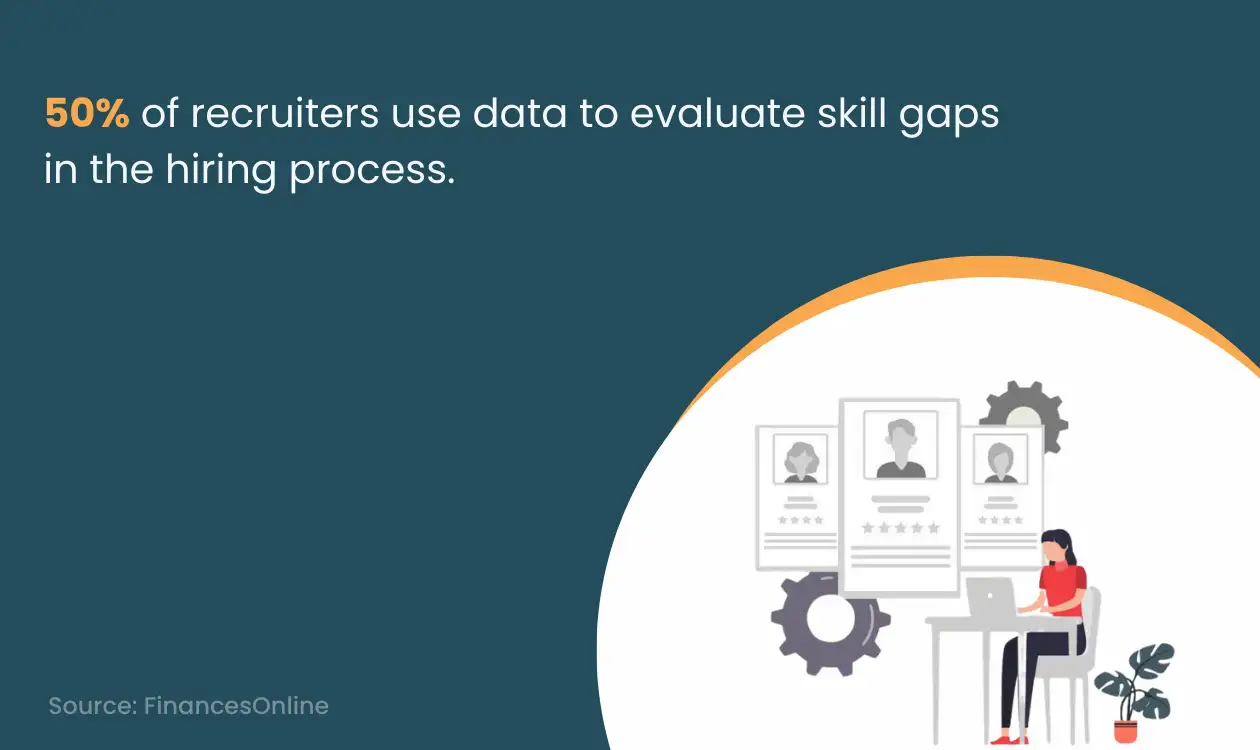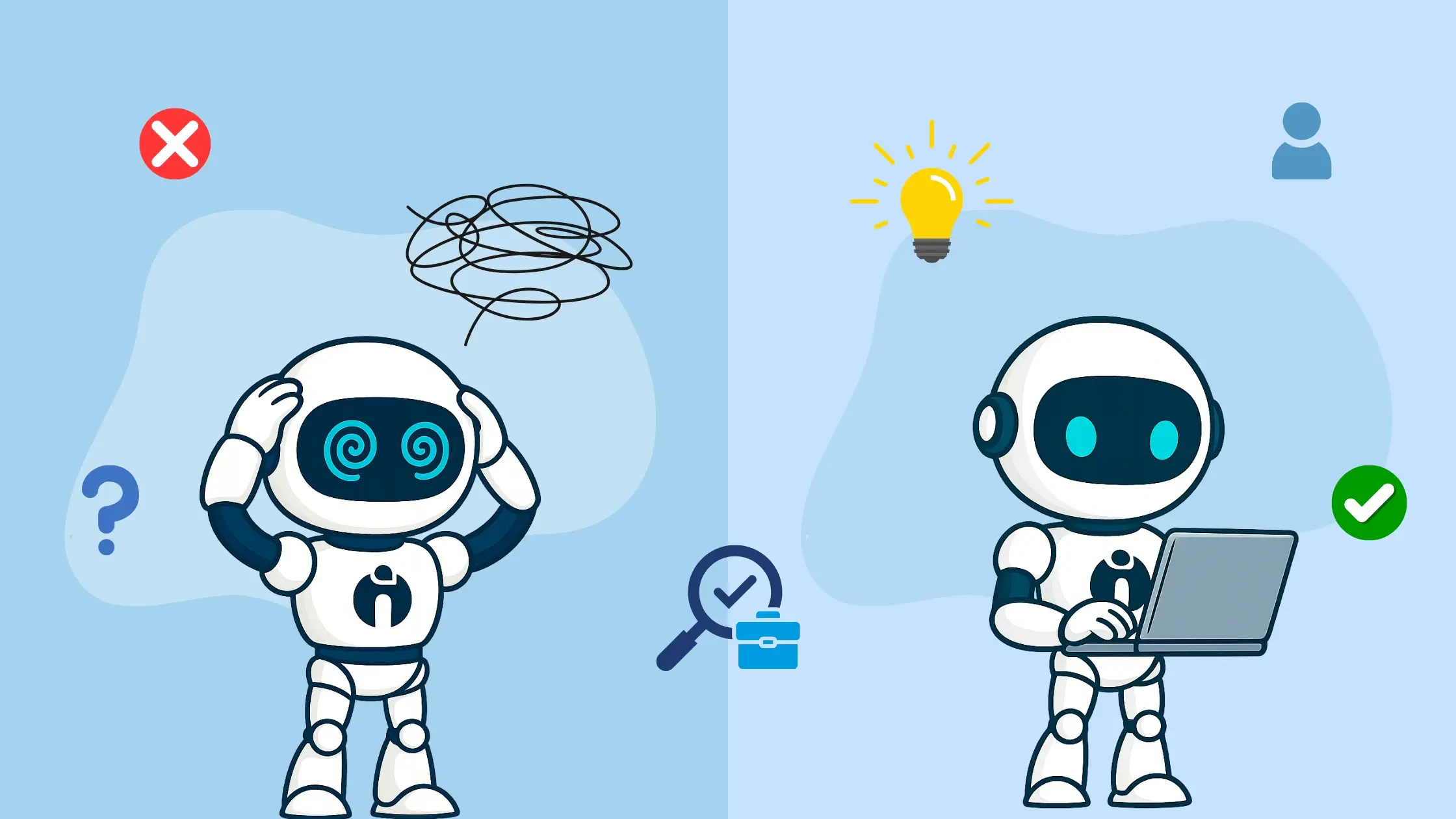TL;DR
- Effective candidate database management simplifies recruitment and saves time.
- Use Applicant Tracking Systems (ATS) and AI-driven analytics to enhance data handling and candidate selection.
- Automate routine tasks and ensure GDPR compliance for privacy and trust.
- Segment and regularly cleanse your database to keep it organised and accurate.
The hiring process can be tedious, time-consuming, and take up too much energy, but can you imagine how difficult it is to face stacks and stacks of an unorganised database during and after the recruitment of new candidates?
So are you one of those recruiters or hiring professionals who are struggling with optimising your candidate database management? And want to know how to manage the candidate database effectively? If so, then check out this blog; it will provide you with 11 different ways to manage the candidate database appropriately. Thus, the searching part becomes easy and meaningful.
It doesn't matter whether the database is of new candidates or existing employees, but it is highly important to manage it properly, as an unorganised database brings chaos and takes up too much time and energy when certain data is required from the database.
The recruiting process always starts before there is any vacancy. The human resource team continuously maintains the candidate database in order to ongoing talent acquisition. So, in the future, they will have a strong and meaningful talent pool for growth.
What is a Candidate Database Management?
The candidate database, also known as the applicant database, is where all the information about active as well as passive candidates is stored. In the candidate database, recruiters are able to find the profiles of candidates who have applied for the job.
Managing the applicant database means recruiters are updating every piece of candidate information in real-time. The candidate database should be managed in a way that is beneficial to both organisations and recruiters. Design a database in a manner to obtain any individual candidate or a group of similar candidates instantly.
It is true that a good recruiter is always familiar with all recruitment stages, processes, and things. These things include job posting, attracting the right talent, pre-screening, and so on.
Apart from this, the recruiter also needs to be aware of candidate database management and form a positive relationship with candidates.
Why Should You Care about Candidate Database Management?
Recruiting database is a base and essential factor for the optimal recruitment process. The candidate database is primarily responsible for simplifying all hiring process activities. It helps recruiters and hiring professionals quickly provide accurate information about high-quality candidates, which ultimately leads them to make better placements for growth.
The applicant database enables HRs and recruiters to place top talent faster before the opportunity is lost in a tight job market. Hence, managing the candidate database and keeping it clean and organised is incredibly important. So, recruiters have to continuously move candidates from different stages of sourcing, promoting open jobs, screening, profile reviewing, skill assessment, interviewing, onboarding, rejecting, etc.
If the candidate database is not well established and not updated in real-time, then it will create more confusion and consume an ample amount of time for recruiters. Hence, consistent candidate database management and adding candidates to the database is an important part of the recruitment process.
Top 11 Tips to Do Candidate Database Management Like a Pro
Managing the candidate database is not a piece of cake. It should be managed in such a way that it should be fruitful toward the recruitment process.
Manage the candidate database where searching and data reverting become accurate and utilitarian. Thus, here we have shared 11 tips to manage the candidate database effectively. Let’s get started.
1. Strategic Pre-Planning
The database should be prepared before starting the hiring process so the data can be entered into the database right away instead of piling on the data and struggling to make data entries and maintain the database. Therefore, form a plan if you want a manageable candidate database. The categories in the database can be altered or added later according to the need.
Raise some valuable questions that justify the pre-planning process.
-
What is the purpose of doing this?
-
What do you want to achieve?
-
Why should it be done?
-
What should be the outcomes?
2. Maximising Application Tracking System (ATS) Capabilities
The simplest and best way to manage your candidate's database is by using an Applicant Tracking System (ATS). It helps to post jobs across multiple platforms and a data-centered approach for hiring new candidates.
The applicant tracking system is the latest recruiting technology with AI automation features. Hence, ATS is able to identify the most qualified and best resume for the open position by detecting candidate skills, qualifications, experience, and keywords. So, ATS suggests you are the best match for the job systematically.
3. Integrate AI-driven Analytics
Integrating AI-driven analytics into your recruitment process can significantly enhance how you understand and utilise candidate data. Think of it like having a super-smart assistant that can quickly analyse tons of information and spot trends that might not be obvious at first glance. This technology can predict which candidates are likely to succeed in a role, helping you make better hiring decisions.
By using AI analytics, you can also save time. It automates the tedious parts of sorting through applications and focuses your attention on the top candidates. Plus, it continuously learns and improves its suggestions based on outcomes, which means the more you use it, the smarter it gets.
So, in simple terms, integrating AI-driven analytics is like upgrading your recruitment toolkit with a powerful tool that helps you spot the best talent faster and more accurately. It's a smart move if you want to stay competitive and make informed hiring decisions based on data, not just gut feelings.
4. Automate Routine Tasks
Automating routine tasks in your candidate database management can be a real game-changer. Think about all those repetitive jobs like setting up interview schedules or sending out confirmation emails. Instead of spending your day on these, you can use automation tools to handle them.
This frees up your time, so you can focus on more important aspects like engaging with potential candidates or strategising for upcoming recruitment drives.
Plus, it reduces the chance of human error, keeping your process smooth and professional. It's like having a reliable assistant who ensures that the groundwork is always perfectly laid out for you.
5. Ensure GDPR Compliance
Keeping our candidate database compliant with GDPR isn't just about following rules; it's about respecting privacy and building trust. Think of it this way: everyone's data is personal, and how we handle it sends a big message about our ethics and integrity as a company.
Under GDPR, we need to ensure that we collect data legally, use it transparently, and protect it diligently. This means getting clear consent from candidates before gathering their information, telling them exactly how we'll use it, and making sure it's secure.
It's not only about avoiding hefty fines but about valuing our candidates' privacy as much as they do. When we get this right, candidates feel more comfortable sharing their information, and that builds a foundation of trust that benefits everyone.
6. Segmentation of Candidate Database
You should create segments in your candidate database based on categories like skills, location, language, experience, etc. This makes it easier to find candidates' data and keeps the database properly arranged.
To make the sourcing process easier, you can also add tags according to the qualification. Generally, use skills as a tag. The well-managed candidate database's aim is to find the right professional candidates easily and quickly that match the job description of the company's role and responsibilities.
7. Standardised Data Entry Protocols
Set up criteria for how the recruiters should enter data and new records for candidate screening. Also, the data of the candidates that have been organised and properly labeled should be used to set an example that can be used by the recruiters during the hiring process and thereafter. This brings consistency and keeps the database organised.
8. Professional Database Cleansing
If your database is totally out of control and you can't comprehend beginning a cleanup procedure, then you should contact somebody to clean your current database. After a while, the candidate database also needs a cleanup process. Because of some unwanted processes and activity, the candidate database got corrupted for some time.
You can consider hiring a great employee, freelancer, or intern to organise and label your database properly.
9. Integration of Third-Party Tools
Look for third-party tools that can assist you in organising your database. Different innovations that incorporate into ATS can assist you with parsing resumes into previous or altered scientific categorisations like skills, languages known, experience, and so on, making going through and using the database simpler and more efficient.
So, investment in third-party tools creates a higher version of your candidate database due to its features like automating emails, scheduling interviews, messaging, profile updates, etc.
10. Ensuring Team Accessibility
Let know your recruiting team the appropriate utilisation of the candidate database. Make collaboration amongst the team concerning better recruitment productivity. Adopt the right recruitment software and applications that are mainly developed for HR recruitment team collaboration. Use various software that is specially invented for recruiters and collaboration. This software makes the recruitment process easy for the team.
11. Active Candidate Engagement
Send the automated emails and messages according to the conversation by using a third-party tool. Keep in touch with each candidate and also communicate with inactive candidates. Maintain good relationships with them to offer them a better candidate experience. If in the future, your company requires their level of skill and expertise, it will be easier for you to make them a part of the organisation. Also, you can keep updating your database with data enrichment.
Final Thought on Candidate Database Management
The old techniques of candidate database management on paper and files or Excel sheets are not enough as they can be very complex to maintain. Moreover, the data on paper can easily be lost, causing a huge loss for the businesses.
Adopt the latest recruitment tech and tools that are specially invented for candidate database management only. This recruitment software solution broadly assists you in maintaining candidate databases in various ways. Furthermore, it brings a higher accuracy rate, reducing the time that you spend on managing the candidate database. So, recruiters must implement the above tips to easily and effectively manage the applicant database.
FAQs - Frequently Asked Questions
What are the benefits of effective candidate database management?
Effective candidate database management simplifies recruitment, saves time, and helps recruiters find the right candidates quickly. It also improves the overall hiring process by keeping data organised and accessible, which leads to better placements and stronger talent pools.
How does an Applicant Tracking System (ATS) help in managing candidate databases?
An ATS centralises candidate information and automates tasks like job posting and candidate screening. It uses AI to identify the best resumes for open positions, helping recruiters efficiently match candidates to roles and streamline their recruitment workflow.
Why is GDPR compliance important in candidate database management?
GDPR compliance ensures candidate data is collected, used, and stored legally and securely. Respecting privacy builds trust with candidates and protects organisations from heavy fines, making the recruitment process more ethical and transparent.
How can automation improve candidate database management?
Automation handles repetitive tasks such as interview scheduling and sending confirmation emails. It frees up recruiters’ time for more strategic work and reduces human error, ensuring a smooth and professional recruitment process.

















